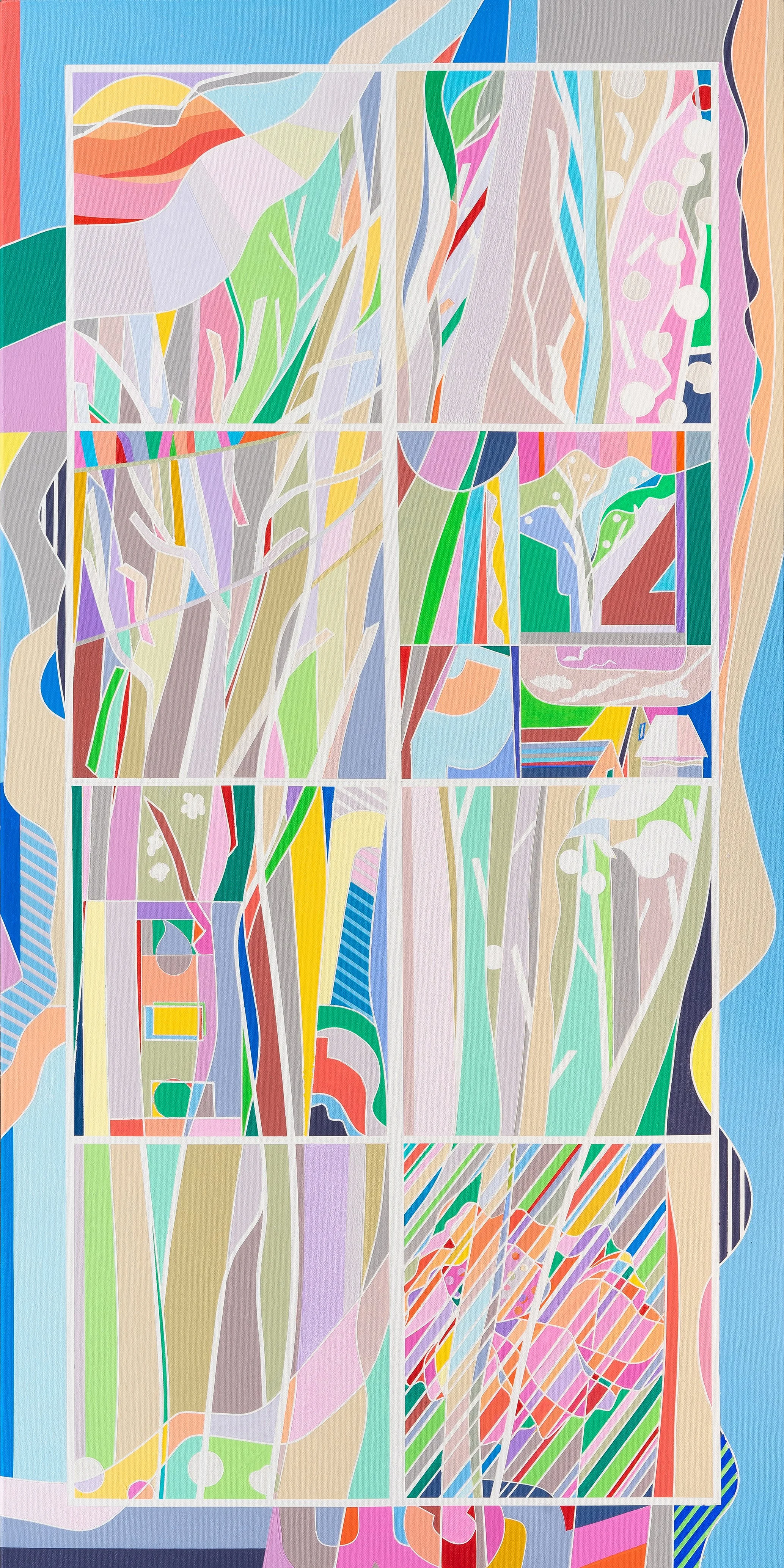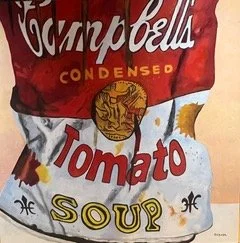Arimathea Pappas
Arimathea Pappas is a name that will resonate deeply in the contemporary art world, a contemporary mixed media artist whose work transcends the physical realm into a space where nature, spirituality, and human consciousness merge. Her pieces, as seen in the collection presented, invite viewers into a visceral, almost primal connection with the land and spiritual traditions of the First Nations. This is not just art; it is a communion between earth, material, and soul.
Pappas’ sculptures, many of which incorporate elements such as skulls, feathers, and other natural materials, are steeped in symbolic references to transformation, enlightenment, and the higher consciousness that she strives to capture. Her work, reminiscent of the spiritual resonance found in the sculptures of Constantin Brâncuși or the natural symbiosis of Andy Goldsworthy, pushes the boundaries of the materials she chooses, elevating each piece beyond its form. The work is both functional and sculptural, pulling from the organic to create artifacts that appear both ancient and timeless, yet pulse with a contemporary vibrancy.
In particular, her use of animal skulls, such as those depicted in the series, evokes a deep spiritual tradition. This could be likened to the symbolic weight Georgia O’Keeffe brought to her iconic desert bones. Yet Pappas' approach is distinct: where O’Keeffe captured death as a form of stillness in nature, Pappas breathes life into her pieces, turning skulls into conduits of spiritual energy. They are not merely remnants of what once was; in her hands, these forms are revitalized as vessels of the divine, carrying stories and teachings through her careful manipulation of texture, material, and spiritual symbolism.
Pappas’ works are deeply narrative, with each sculpture offering a story or a connection to both the physical and metaphysical world. Much like the work of indigenous artists such as Norval Morrisseau, the “Picasso of the North,” her art draws on a rich spiritual heritage, emphasizing interconnectedness with the earth and cosmos. Her pieces hold a mirror up to our contemporary alienation from nature, asking us to reconnect with our origins, to seek the divine within the mundane.
One of the most striking aspects of Pappas’ work is her ability to create layers of meaning through the application of texture and natural materials. The use of clay, moss, feathers, and natural stones, coupled with hand-carved designs and painted symbols, transforms each skull into a unique piece that feels as though it has been crafted not just by an artist, but by nature itself, with Pappas acting as a mere vessel for its voice. This organic interplay between human and earth is one of the reasons why her work stands out in the contemporary art scene.
In comparison to the work of Louise Bourgeois, another artist known for infusing her sculptures with intense emotional and spiritual depth, Pappas similarly taps into the collective unconscious, but through the lens of earth’s materials and its cycles of life and death. While Bourgeois often drew from her own trauma, Pappas seems to draw from a collective memory, a spiritual well that taps into ancient traditions and teachings. There is an inherent respect for the life cycle in Pappas’ work, and an understanding that death is not an end, but a part of the ongoing flow of existence.
From a formal perspective, her color palette is dominated by earth tones—ochres, umbers, and whites—each carefully selected to evoke the hues of the land and the natural materials she works with. These tones give her work a timeless quality, grounding them in the physical world, even as they reach toward the spiritual. The textures, from smooth clay to the roughness of natural stone, invite the viewer to not just look but to feel, to touch, and to connect with the piece in a tangible way.
In terms of the contemporary art scene, Arimathea Pappas’ work finds its place among those who are questioning the relationship between human and nature, between spirit and form. Her work stands as a powerful reminder of the wisdom held within indigenous traditions and the potential of art to act as a bridge between worlds. Much like the art of Kiki Smith, who uses her sculptures to explore the body and its relationship to the natural world, Pappas’ pieces invite reflection on how we engage with the earth and its resources, as well as how we understand our place within its cycles.
Her works have already begun to gain recognition, and it is no surprise. There is a noble quality to her practice, a reverence for the materials she works with and the teachings she incorporates. Her sculptures are not just objects to be viewed; they are experiences, filled with layers of meaning and purpose. They transcend the limitations of static art, entering into the realm of the sacred, where each piece serves as a reminder of the stories we carry, the connections we must maintain, and the transformation that is always possible.
Pappas’ art could also be compared to the installations of Anselm Kiefer, whose monumental works often evoke themes of history, mythology, and collective memory. Like Kiefer, Pappas’ pieces are not confined to the aesthetic realm but are steeped in deeper meaning, using material and form to explore complex narratives. Where Kiefer engages with the debris of history, Pappas engages with the remnants of nature, yet both artists manage to evoke the same sense of awe, reverence, and introspection in their audience.
Arimathea Pappas is a force to be reckoned with in the contemporary art world. Her work stands as a testament to the power of nature, the wisdom of spiritual traditions, and the transformative potential of art. In her hands, materials such as clay, skulls, and feathers are not just objects, but sacred tools for storytelling, reflection, and connection. Her work is poised to leave a lasting impact, both on those who engage with it directly and on the broader conversation within the art world about the relationship between human, nature, and spirit. Arimathea Pappas’ sculptures are the kind of art that remind us not just of what is, but of what could be, if we dare to reconnect with the earth and ourselves.
To expand on the profundity of Arimathea Pappas' work, it’s essential to delve into the psychological and spiritual impact her pieces have on their audience. Each of her creations acts as a meditative object, encouraging the viewer to not only reflect on the materials but on the larger existential questions they evoke. The use of skulls, often seen as symbols of death or finality, in Pappas' hands, become totems of life cycles, regeneration, and the transcendence of the soul. In this way, her art aligns closely with shamanistic practices, where physical objects are imbued with spiritual significance, transforming them into tools for healing or enlightenment.
Pappas' approach to these materials can be understood in the context of Carl Jung’s ideas about archetypes and the collective unconscious. The skulls she uses resonate deeply with our shared human understanding of life, death, and the natural world, acting as a universal symbol across cultures. These symbols draw on an ancient, primal part of the human psyche, where our connection to nature was more direct and visceral. Her art encourages a reconnection to these roots, bringing to the surface what modern life often causes us to suppress or ignore.
Her work is not merely decorative or representational; it functions as a catalyst for introspection and spiritual awakening. This transformative potential positions Pappas' work within a lineage of artists who use their practice to probe the metaphysical, much like Marina Abramović, who uses performance to explore consciousness and human limits. While Abramović works with the human body as her primary medium, Pappas works with natural forms to push the boundaries of what art can evoke spiritually. Both artists share a common goal: to challenge the viewer to confront their own boundaries—whether they be emotional, physical, or spiritual.
Pappas’ work holds an important place in the current discourse on sustainability and environmental consciousness in art. As the global art world increasingly seeks ways to address environmental degradation and promote more sustainable practices, Pappas stands as a figure at the forefront of this movement. Her use of natural materials speaks to an ethos of respect and reverence for the earth’s resources, contrasting sharply with the often wasteful practices of the mainstream art industry. In this sense, her art is not only spiritually enriching but politically resonant, echoing the calls for a more harmonious relationship with our planet.
The tactile quality of her work also encourages a shift in how we interact with art. While much contemporary art remains purely visual, meant to be seen but not touched, Pappas’ pieces invite a more intimate, multi-sensory engagement. This return to the tactile is significant, as it brings the viewer into closer proximity with nature, emphasizing the importance of physical connection in an increasingly digital world. Her use of feathers, moss, stones, and other raw elements creates a dialogue between the viewer’s body and the material world, reinforcing the themes of interconnectedness that are central to her practice.
As Pappas’ reputation continues to grow, her work is destined to occupy a crucial place in the contemporary art landscape. In a time when art is often seen as a commodity, her creations offer something far deeper: a space for reflection, healing, and spiritual engagement. Her ability to merge the ancient and the modern, the natural and the spiritual, positions her as a visionary in the field, one whose work will not only endure but will also inspire future generations of artists and art lovers alike.
Arimathea Pappas is an artist whose practice is deeply rooted in the sacred and the natural world, offering a powerful counterpoint to the frenetic pace of modern life. Her work serves as a reminder of the importance of slowing down, of reconnecting with the earth, and of finding meaning in the cycles of life and death that govern our existence. Pappas' sculptures are not just art objects; they are spiritual tools, offering a pathway to deeper awareness and understanding. As she continues to evolve as an artist, it is clear that her work will remain a significant force, one that challenges, inspires, and transforms all who encounter it.
By Marta Puig
Editor Contemporary Art Curator Magazine













